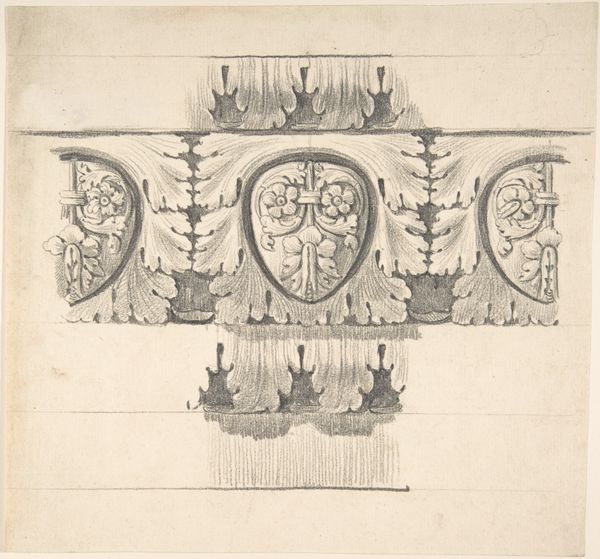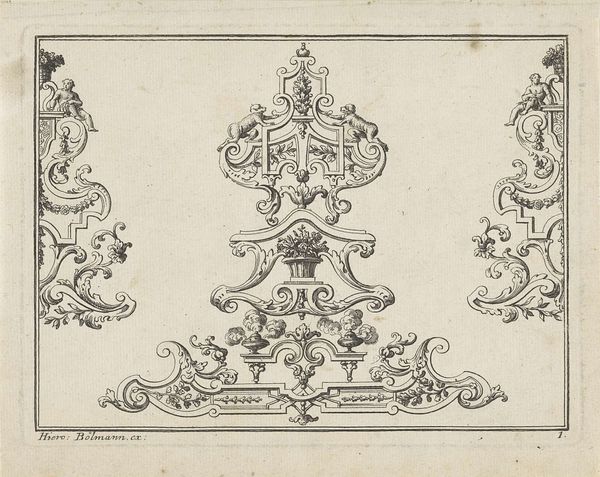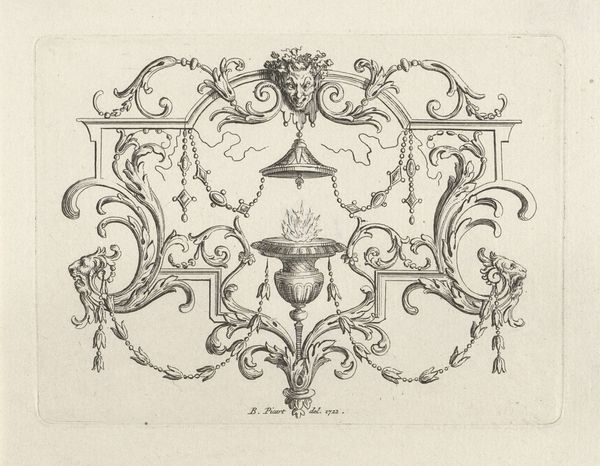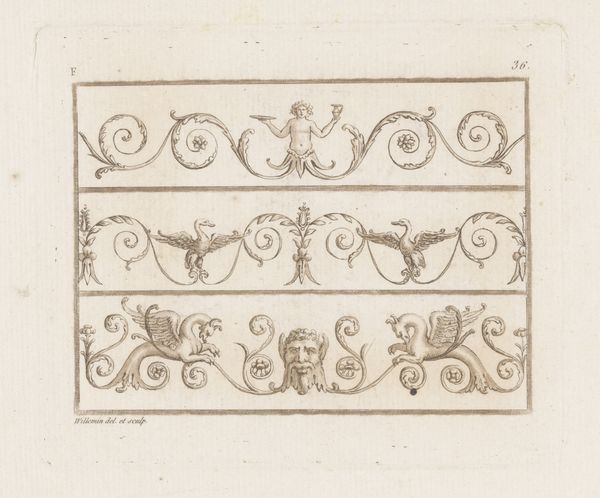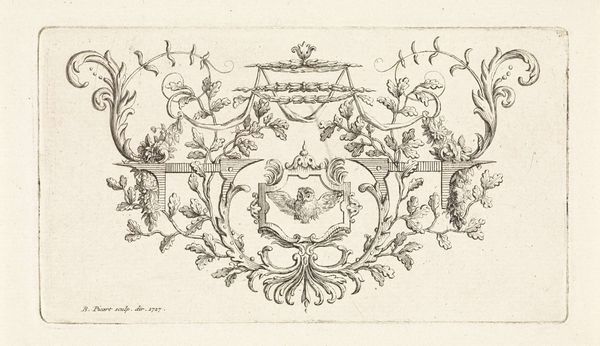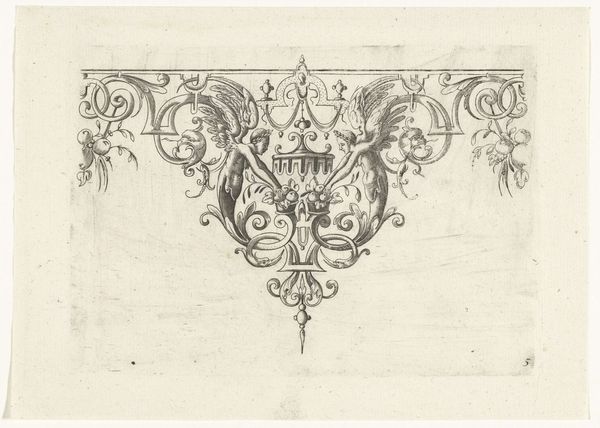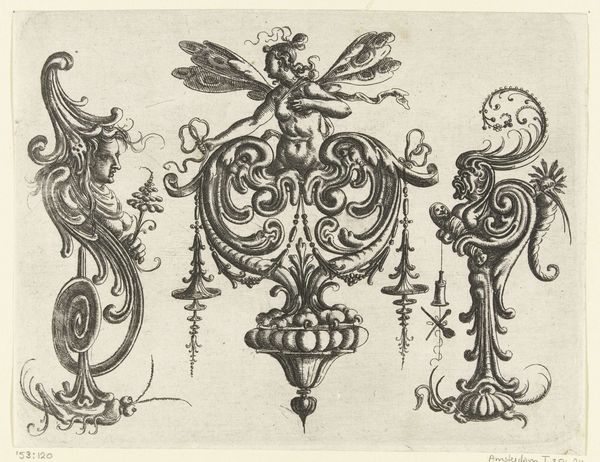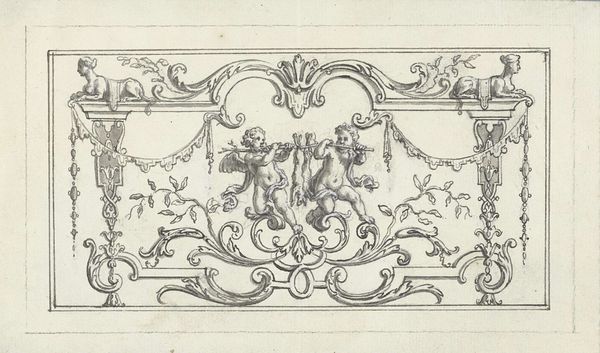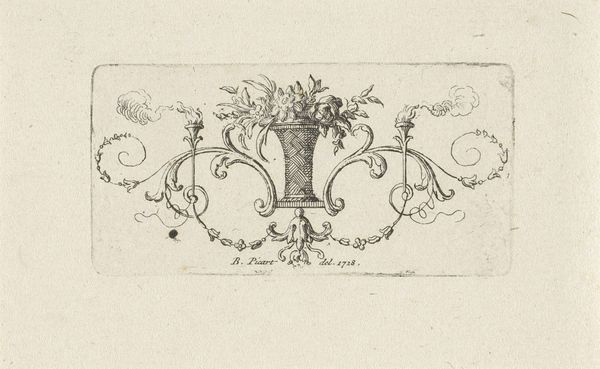
drawing, print, etching, pen, engraving
#
portrait
#
drawing
#
neoclacissism
# print
#
etching
#
geometric
#
pen-ink sketch
#
line
#
pen
#
decorative-art
#
engraving
Dimensions: height 201 mm, width 300 mm
Copyright: Rijks Museum: Open Domain
Editor: This is "Twee ornamentranden met portret en vaas," or "Two Ornamental Borders with Portrait and Vase," from 1776, by Placido Columbani. It's a detailed print, almost like a pen-ink sketch. I'm really drawn to the geometric aspect, but the portrait adds a softness to it all. How should we understand its creation in the context of the time? Curator: The meticulous detail is what captures my attention. Consider the etching process itself, the labor invested in creating the plates, and the role of these prints in disseminating Neoclassical taste. They are a tangible product of 18th-century workshops catering to a burgeoning market for decorative arts. Were these intended for individual purchase or architectural workshops? Editor: That’s fascinating, thinking about the economic context of printmaking. I suppose it could have been accessible to people from diverse social classes if produced on a mass scale. Did the choice of materials—the ink, the paper—affect the production? Curator: Absolutely. The quality of paper, the pigments available for the ink, even the tools used to etch the plate, dictated the final product and therefore its value. We must analyze the labor required, from the initial design to the printing process, and question how that impacted its circulation and its status as art versus craft. Notice the skill of Columbani in employing these materials, isn't that impressive? Editor: Definitely. So, rather than focusing solely on the aesthetic value, we should examine its historical and economic origins as a physical object? Curator: Precisely. By understanding the materials, methods, and markets that shaped its creation, we gain a deeper appreciation for its cultural significance. The object exists as evidence. Editor: That perspective makes me rethink how art history can include a broader understanding of how economics shape production. Curator: Yes, now consider the social implications that the work itself creates. A new dimension, isn’t it?
Comments
No comments
Be the first to comment and join the conversation on the ultimate creative platform.
